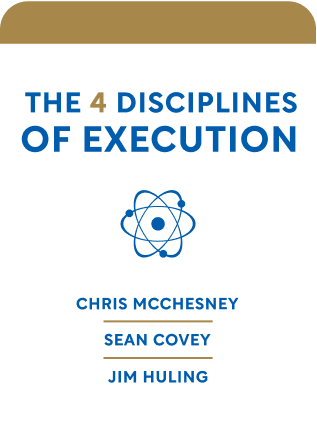
This article is an excerpt from the Shortform book guide to "The 4 Disciplines of Execution" by Chris McChesney, Sean Covey, and Jim Huling. Shortform has the world's best summaries and analyses of books you should be reading.
Like this article? Sign up for a free trial here .
Are you trying to create a scoreboard? Do you need 4DX scoreboard examples to help you?
4DX scoreboard examples show how it can track key performance metrics for your goals and measures. These examples are put in the context of a case study at a book production department.
Keep reading to see some 4DX scoreboard examples from the fictional book production department working through The 4 Disciplines of Execution.
4DX Scoreboard Examples
There are many ways to design a scoreboard. These 4DX scoreboard examples will show you some options that make sense in the context of that organization and its goals.
Step 1: Choose a Scoreboard Format
There are several options for format:
- Trend line. Trend lines are most effective for lag measures. You can see where you’re supposed to be and where you are.
- Common gauges (speedometer, thermometer, and so on). This is most effective for time measures (for example, process speed).
- Bar chart. This is most effective for comparing performance of individuals or teams.
- Andon chart. An andon chart shows symbols that represent the status of measures, such as a smiley face when something is on target, or a sad face when it’s not. This type of chart is most useful for displaying lead measures.
The goal is to get team members invested in the scoreboard, so let them personalize it by adding details such as photos or other elements that represent the team. For example, engineers might set up flashing lights on their scoreboard. Personalization helps a team take ownership and makes winning about personal pride.
Shortform Example: Book Production Department: Formatting
Maria and her team used a trend line to show the difference between their goal costs and their current costs. Here are their 4DX scoreboard examples:
They added a chart for lead measure 1 (renaming book files) that tracked weekly individual performance:
Lead Measure: Each team member renames files for two books per week
| Team Member | Week 1 | Week 2 | Week 3 | Week 4 |
| Craig | 2 | 2 | 4 | |
| Emiko | 2 | 2 | 4 | |
| Harriet | 1 | 2 | 2 | |
| May | 2 | 1 | 2 | |
| Raoul | 1 | 3 | 3 | |
| Fred | 2 | 2 | 3 |
They added a bar graph for lead measure 2 (completing the checklist):
Step 2: Test the Scoreboard Against the Criteria
All of these 4DX scoreboard examples required testing, so test your scoreboard. If the answers to all of the following questions are yes, the scoreboard passes. Is it:
- Simple?
- Visible?
- Complete?
- Quick to read?
Shortform Example: Book Production Department: Testing
Maria and her team evaluated the 4DX scoreboard examples from above against the criteria. The board is simple—it has only three parts. The design is visible—the graphs are visually clear and well-labeled. The board is complete—it shows the WIG, lag, and lead measures, and it’s obvious at a glance if the team is winning or losing.
Step 3: Physically Create the Scoreboard
Ideally, get the team to create the board themselves. The more they work on it, the more engaged they will be. However, if they don’t have discretionary time, you as the leader might need to do the actual creation.
It doesn’t matter what you make the scoreboard from as long as it meets all the criteria in step 2. Poster Board, whiteboard, digital, and so on are all fine.
Shortform Example: Book Production Department: Creation
Maria’s team made their scoreboard using book design software and printed it poster-size. They decorated it with images from their favorite books.
Step 4: Update the Scoreboard
The board must be updated at least weekly. Choose someone (or multiple people) to be the scorekeeper and make sure they understand it’s an important responsibility. Make sure everyone on the team knows when and how often updates will be posted.
Shortform Example: Book Production Department: Scorekeeping
Each team member records the number of files they rename per week. Maria trusts them, but periodically audits them to make sure the scores they write on the board match what they’re actually doing. The team only wins if everyone performs.
Yield From the 4DX Scoreboard Examples
After implementing Disciple 3, you and your team will have created a player’s scoreboard that meets all the criteria and inspires your people to win.

———End of Preview———
Like what you just read? Read the rest of the world's best book summary and analysis of Chris McChesney, Sean Covey, and Jim Huling's "The 4 Disciplines of Execution" at Shortform .
Here's what you'll find in our full The 4 Disciplines of Execution summary :
- The 4 disciplines that can make any strategy a successful reality
- Why a great plan falls apart when you don't think adequately about execution
- The 6 steps you need to scale the 4DX model across an entire organization






